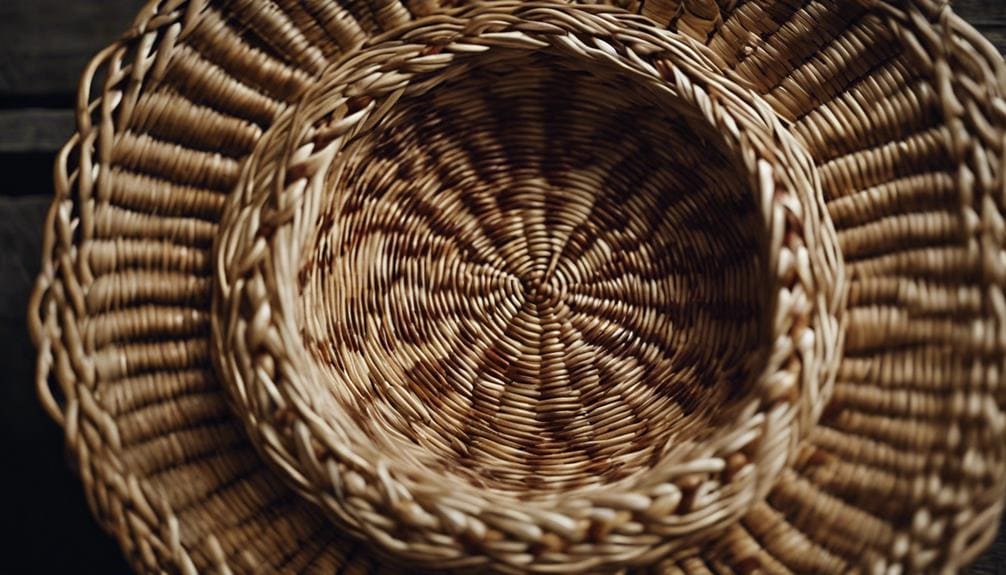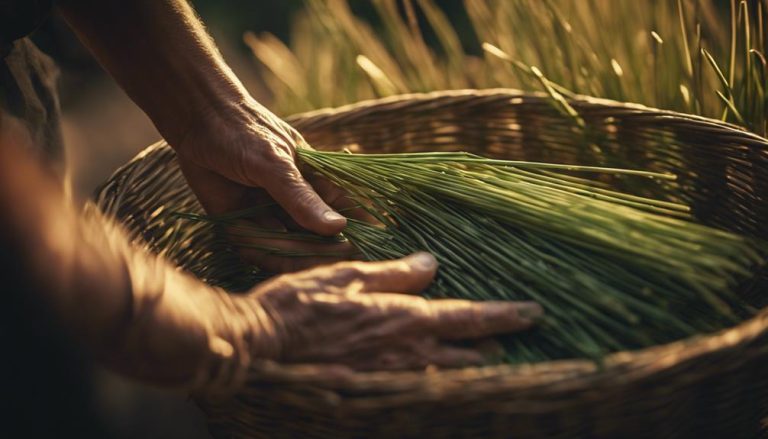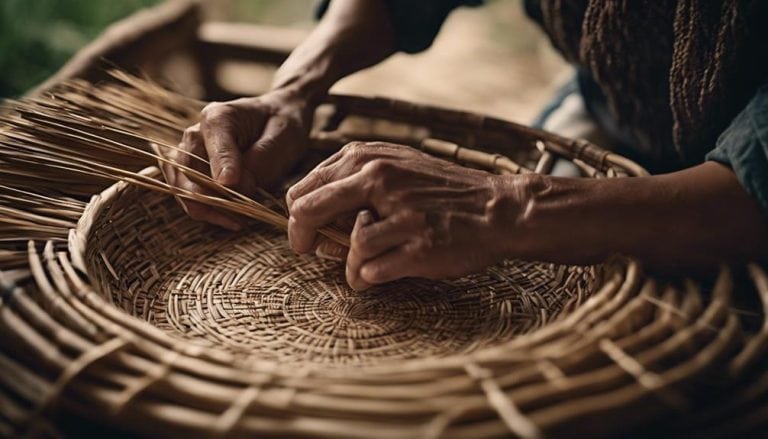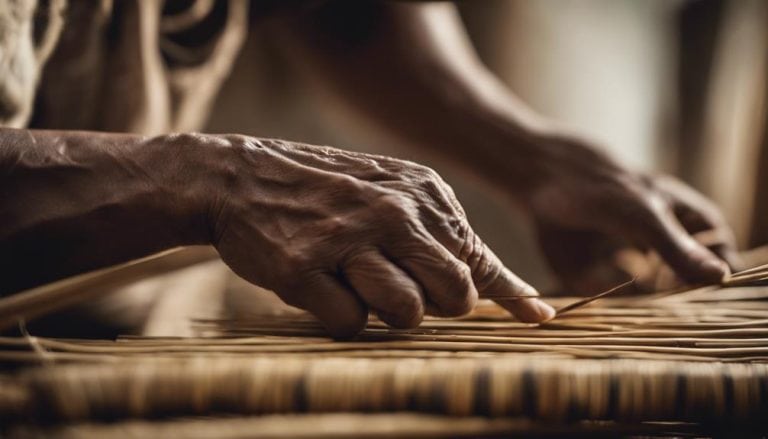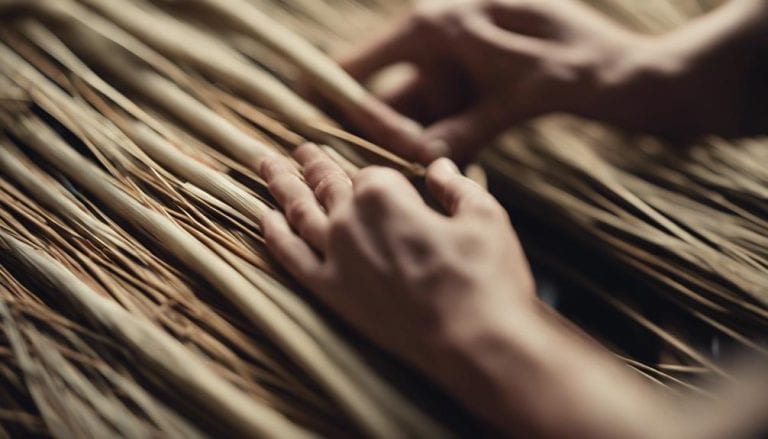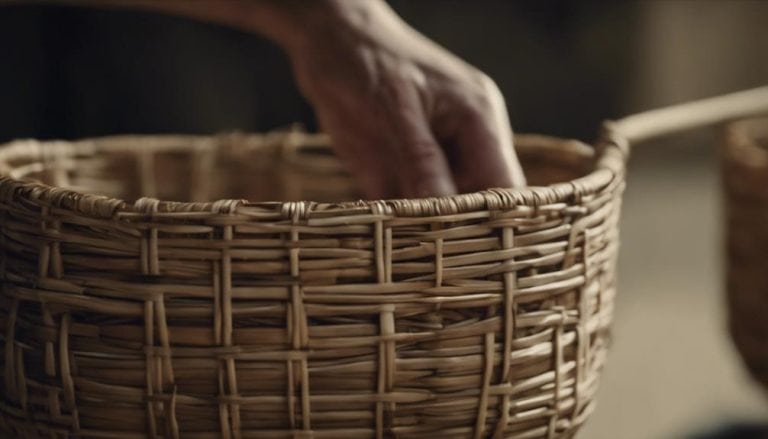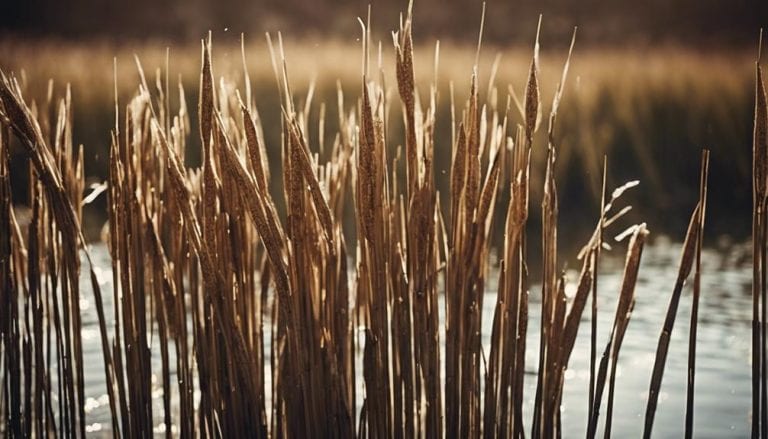The Versatility of Rush Reeds in Basketry
Upon examining the theory of rush reeds being a sustainable alternative to conventional plastics in basket weaving, one cannot help but wonder about the extent of their versatility in modern craftsmanship. The ability of rush reeds to transcend traditional boundaries and adapt to contemporary design needs is a topic that begs further exploration. How these natural fibers can be manipulated and intertwined to create functional yet aesthetically pleasing pieces opens up possibilities for artisans and eco-conscious consumers.
“The versatility of rush reeds in basketry lies in their flexibility and strength, making them ideal for intricate weaving patterns and durable finished products.” Rush reeds offer artisans a wide range of creative possibilities due to their natural properties, enhancing the beauty and functionality of woven baskets.
Key Takeaways
- Sustainable rush reeds support eco-friendly practices and traditional craft techniques.
- Rush reeds offer diverse design options and durability in basket weaving.
- Maintenance tips ensure the longevity and quality of rush baskets.
- Rush reeds contribute to a sustainable future and cultural preservation.
Benefits of Using Rush Reeds
Using rush reeds in basket weaving offers numerous benefits due to their sustainable sourcing from wetlands and biodegradable nature. They provide a versatile material that aligns with sustainability goals while supporting local economies and artisans. The eco-friendly durability of rush reeds ensures that baskets crafted from this material have a long lifespan, reducing the need for frequent replacements and minimizing environmental impact. The artisanal craftsmanship of working with rush reeds adds a touch of cultural heritage to each piece, showcasing the traditional techniques passed down through generations.
Furthermore, the sustainable aesthetics of rush reeds lend a unique and natural beauty to the baskets, attracting those who appreciate eco-conscious designs. By choosing rush reeds over synthetic materials, individuals contribute to preserving wetland ecosystems and supporting the livelihoods of local communities dependent on these resources. Embracing the use of rush reeds in basket weaving promotes sustainability and honors the rich cultural heritage associated with this time-honored craft.
Techniques for Working With Rush

Understanding the proper techniques is essential for creating durable and versatile baskets when working with rush reeds in basket weaving. Twisting methods play a vital role in manipulating rush to form different shapes and sizes of baskets. We can create intricate patterns and designs within the basket structure by twisting the rush in specific ways.
Shaping rush is another crucial aspect of working with this material. Rushes can be bent, folded, or coiled to achieve the desired form, allowing for basket-making creativity and customization. Color dyeing is a technique that can enhance the aesthetic appeal of rush baskets. Dyeing rush reeds in various colors can add vibrancy and uniqueness to the final product.
Additionally, the finishing rush involves trimming, smoothing, and sealing the edges to ensure a polished and professional look. Proper finishing techniques not only improve the overall appearance of the basket but also contribute to its longevity and durability. Mastering these techniques is key to harnessing the full potential of rush reeds in basket weaving.
Creative Design Ideas With Rush
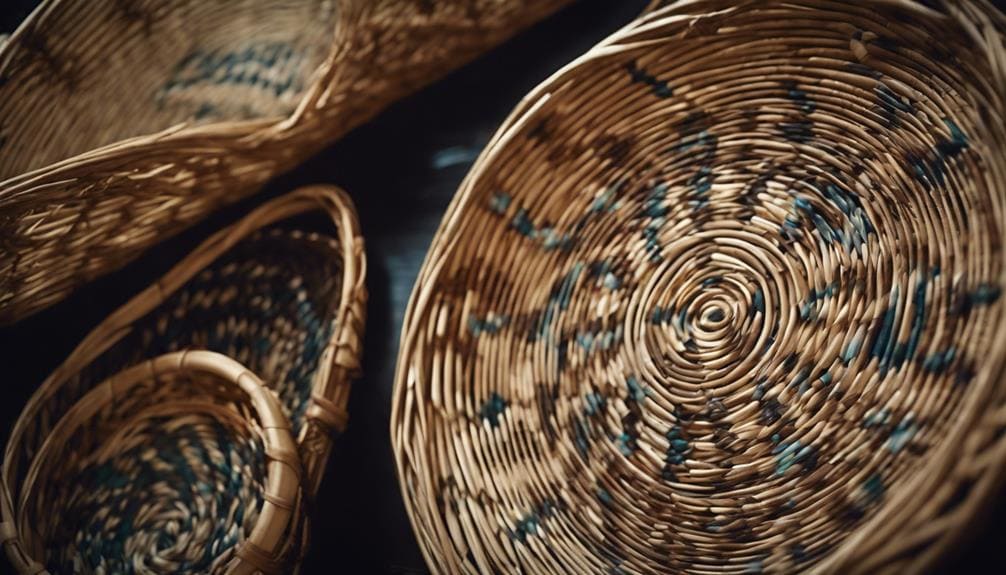
Exploring the intricate interplay of colors and textures with rush reeds opens up creative design possibilities in basket weaving. By incorporating rush reeds in basket designs, one can experiment with colorful combinations and intricate patterns that elevate the aesthetic appeal of the final product. Weaving rush reeds in different patterns and textures allows for the creation of visually stimulating baskets that reflect contemporary twists and traditional roots.
| Colorful Combinations | Intricate Patterns | Traditional Roots |
|---|---|---|
| Dye rush reeds in vibrant colors | Weave rush reeds in dynamic patterns | Combine rush reeds with other natural materials |
| Mix rush reeds of varying thickness | Experiment with different weaving techniques | Embrace the cultural heritage of rush reed basketry |
| Explore contrasting color schemes | Create depth and visual interest | Showcase the versatility of rush reeds in basket weaving |
Incorporating Rush Reeds in Modern Basketry
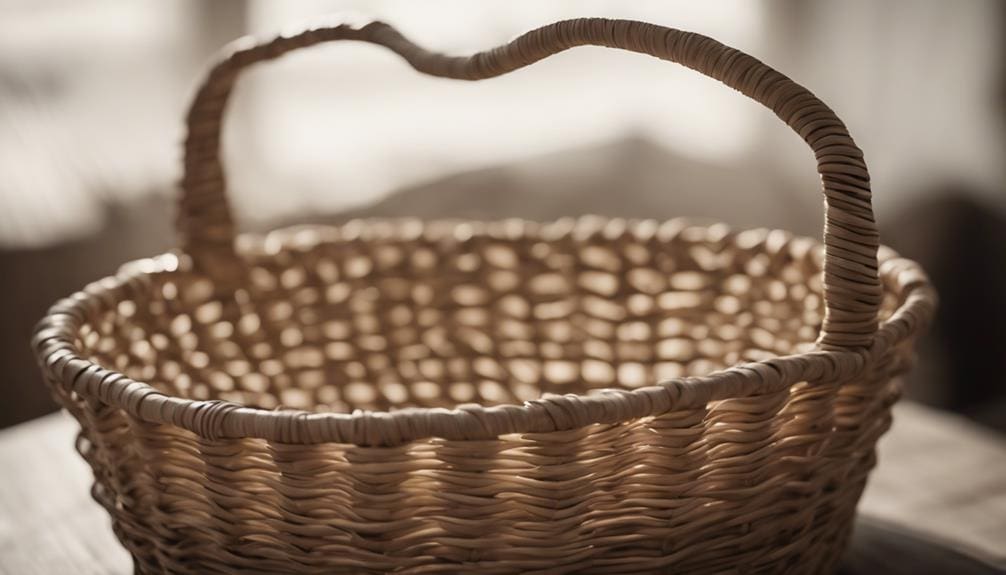
Incorporating rush reeds into modern basket weaving practices enhances sustainability efforts and introduces a versatile material with historical significance into contemporary design processes. Rush reeds from wetlands offer eco-friendly alternatives for sustainable weaving practices. Their tight weaving results in durable and functional baskets, aligning to reduce plastic dependency in basket making.
The biodegradable and renewable nature of rush reeds supports a shift towards environmentally conscious materials in modern design. Innovative applications of rush reeds include packaging materials, disposable utensils, and substitutes for plastic straws, showcasing the material’s versatility in contemporary basketry. By embracing rush reeds, we honor the historical roots of basketry and contribute to a more sustainable and culturally significant approach to contemporary design.
Maintenance and Care Tips for Rush Baskets
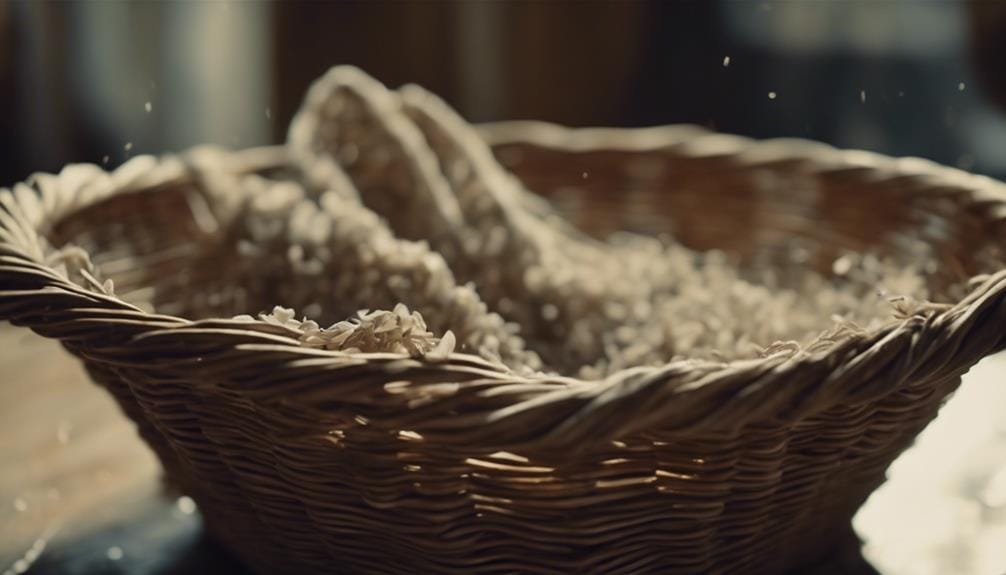
Proper maintenance of rush baskets is essential to ensure longevity and preserve natural beauty. To care for rush baskets, protecting them from direct sunlight and heat sources is crucial to prevent fading and drying out, which could lead to damage such as cracking. Regular dusting with a soft cloth or brush is recommended in order to avoid the accumulation of dirt and debris.
Harsh chemicals should be avoided when cleaning rush baskets, as these can harm the natural fibers. Storing rush baskets in a cool, dry place is vital to prevent mold growth and maintain the material’s integrity. Additionally, repairing any damage promptly and correctly is key to prolonging the lifespan of rush baskets. When it comes to color preservation, taking these precautions will help retain the vibrancy and beauty of the rush baskets over time.
| Maintenance Tips | Description |
|---|---|
| Avoid direct sunlight | Prevents fading and weakening of the material. |
| Keep away from heat sources | It prevents drying out and potential cracking or damage. |
| Regular dusting | Prevents the buildup of dirt and debris. |
| Avoid harsh chemicals | Protects the natural fibers from damage. |
| Proper storage | Prevents mold growth and preserves the material’s integrity. |
Historical Significance of Rush Reeds
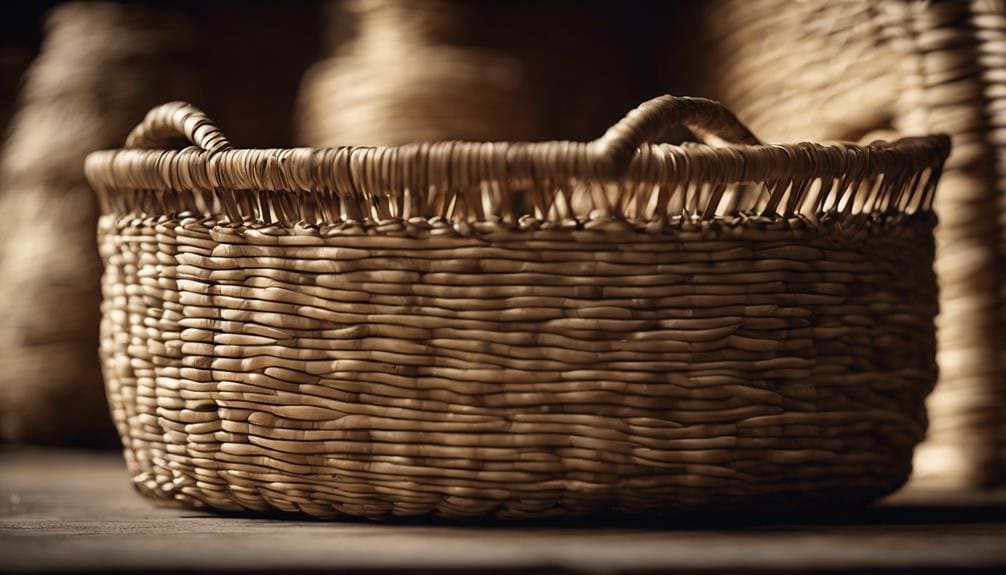
With a rich history spanning various cultures, rush reeds have played a pivotal role in traditional basket-making practices. Rushes hold significant cultural significance, representing a connection to nature and sustainable practices through their utilization in basket weaving.
The historical importance of rush reeds can be seen in the following aspects:
- Cross-Cultural Influence: Rush reeds have been used by diverse cultures worldwide, showcasing their adaptability and widespread acceptance in traditional crafts.
- Symbolism of Sustainability: Rushes symbolize eco-friendly and locally sourced materials, embodying sustainable practices that resonate with modern environmental concerns.
- Preservation of Craft Techniques: Incorporating rush reeds into basket weaving not only honors tradition but also ensures the preservation of ancient craft techniques for future generations.
- Community and Ecosystem Support: By utilizing rush reeds, communities support local ecosystems, reduce their carbon footprint, and promote a sense of environmental stewardship through sustainable harvesting practices.
Environmental Impact of Choosing Rush
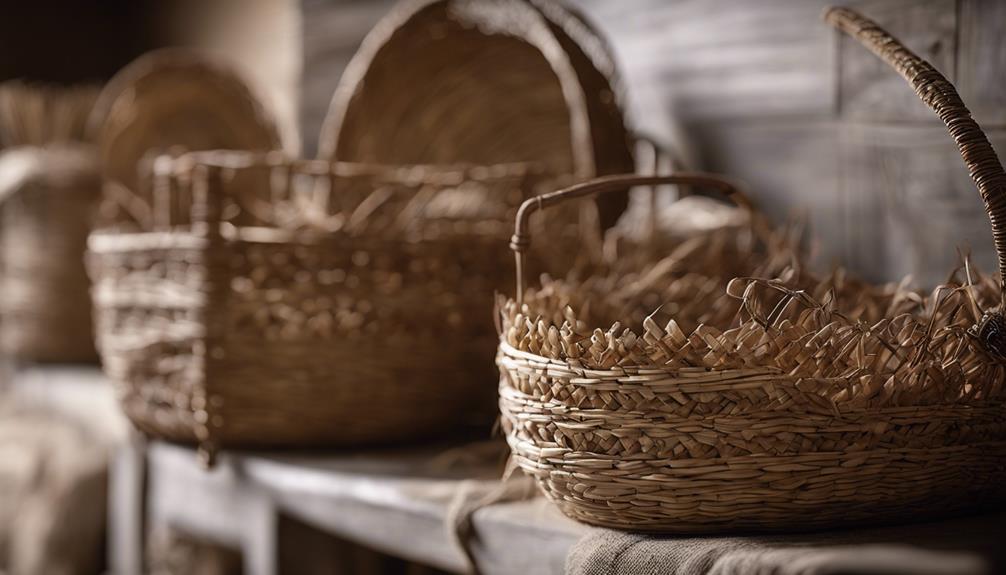
Utilizing rush reeds for basket weaving presents a sustainable choice that aligns with eco-friendly practices and reduces the environmental impact of traditional craft production. Rush reeds are sourced sustainably, as they are renewable and biodegradable, unlike many synthetic materials commonly used in basketry.
By opting for rush reeds over these synthetic alternatives, artisans significantly decrease the environmental footprint of their creations. Furthermore, the local harvesting of rush reeds for basket weaving plays a crucial role in minimizing carbon emissions associated with transportation and material sourcing. This practice benefits the environment by reducing the carbon footprint and supports the preservation of traditional craft techniques.
Choosing rush reeds reflects a conscious decision towards eco-friendly options, promoting a shift from plastic dependency within the craft industry. Embracing rush reeds in basket weaving enhances the craft’s quality and contributes to a more sustainable and environmentally conscious future.
Frequently Asked Questions
What Is the Difference Between Reeds and Rushes?
I weave baskets with rushes and reeds. Rushes are aquatic plants with solid stems that make them pliable. Reeds, which are grass-like plants, provide flexibility and strength. Each serves a purpose in basketweaving techniques, offering unique textures and structures for diverse designs.
How Do You Harvest Rushes for Weaving?
I cut rushes low with sharp tools, aiming for uniform thickness and length. Timing matters; late summer to early fall harvests best. Drying is key for durability. Sustainable practices ensure future rushes for weaving.
What Reeds Are Used in Basketry?
I use various round reeds in basketry for weaving techniques with natural fibers. I enjoy creating decorative patterns in traditional crafts. Different reed gauges like RR08-SM, RR09-SM, and RR13-SM allow for specialized basket-making weaving options.
Why Are the Baskets Made of Reeds?
Baskets made of reeds offer countless benefits, from their durability to their versatility. They withstand the test of time due to the natural strength of rush reeds. Techniques and weaving patterns enhance their functionality and cultural significance.
Conclusion
In conclusion, the versatility of rush reeds in basketry is truly remarkable. Not only do they offer a sustainable and environmentally friendly alternative to traditional materials, but they also provide economic empowerment to local communities. We can strive toward a more eco-conscious future by incorporating rush reeds into modern basketry designs. As the saying goes, “One man’s trash is another man’s treasure,” and rush reeds exemplify this notion through their multifaceted benefits.

